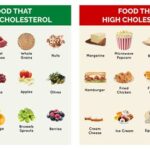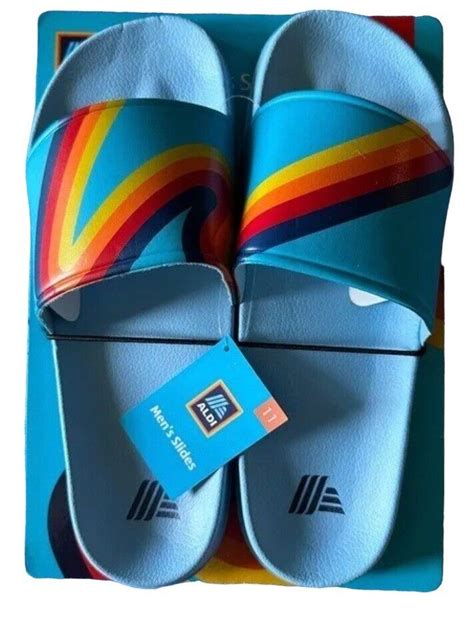
Homeowners may be eligible for up to $13,000 in government-backed incentives for energy-efficient home upgrades, designed to lower energy costs and reduce environmental impact. The programs, primarily tax credits and rebates, aim to encourage investments in renewable energy systems and energy-saving improvements.
The push for energy efficiency comes as homeowners grapple with rising utility bills and growing concerns about climate change. Federal and state governments are increasingly offering financial incentives to promote sustainable practices, making it more affordable for homeowners to invest in upgrades that can pay for themselves over time through reduced energy consumption.
Understanding the Available Incentives
The primary incentives come in two forms: tax credits and rebates. Tax credits reduce the amount of income tax owed to the government, while rebates offer a direct refund after the purchase and installation of qualifying equipment.
The federal government offers a range of tax credits for energy-efficient home improvements. The most significant of these are the Energy Efficient Home Improvement Credit and the Residential Clean Energy Credit, both authorized under the Inflation Reduction Act of 2022.
The Energy Efficient Home Improvement Credit, also known as 25C, covers 30% of certain qualified expenses, up to a maximum of $1,200 per year. This credit includes improvements such as:
- Energy-efficient doors: Up to $250 per door, with a total limit of $500 for all doors.
- Energy-efficient windows: Up to $200 per window.
- Insulation: Covers 30% of the cost, with no specific cap.
- Energy-efficient HVAC systems: Including central air conditioners, heat pumps, and water heaters.
The Residential Clean Energy Credit, also known as 25D, offers a larger incentive for investments in renewable energy systems. This credit covers 30% of the cost of new, qualified clean energy property, such as:
- Solar photovoltaic (PV) systems: For generating electricity.
- Solar water heaters: For heating water.
- Fuel cells: That generate electricity and have a capacity of at least 0.5 kilowatts.
- Geothermal heat pumps: For heating and cooling.
- Battery storage technology: Installed in connection with other renewable energy systems.
There is no annual limit to the Residential Clean Energy Credit except for fuel cell property, which is capped at $500 for each half kilowatt of capacity.
State and Local Incentives
In addition to federal tax credits, many states and local governments offer their own incentives for energy-efficient upgrades. These can include rebates, tax credits, and low-interest loans.
For example, some states offer rebates for purchasing energy-efficient appliances, such as refrigerators, washing machines, and dishwashers. Others offer rebates for installing insulation, energy-efficient windows, or solar panels.
The Database of State Incentives for Renewables & Efficiency (DSIRE) is a comprehensive online resource that provides information on state and local incentives for renewable energy and energy efficiency. Homeowners can use DSIRE to find incentives available in their area.
Eligibility Requirements
To qualify for the federal tax credits, homeowners must meet certain eligibility requirements. These requirements vary depending on the specific credit.
For the Energy Efficient Home Improvement Credit, homeowners must purchase and install qualified energy-efficient products that meet specific performance standards. These products must be installed in the homeowner’s primary residence.
For the Residential Clean Energy Credit, homeowners must purchase and install new, qualified clean energy property. The property must be installed at the homeowner’s residence in the United States.
It’s also important to keep detailed records of all purchases and installations, as these will be required when claiming the credits on your tax return. Consult with a tax professional to ensure compliance with all applicable rules and regulations.
How to Claim the Credits
To claim the federal tax credits, homeowners must file Form 5695, Residential Energy Credits, with their tax return. This form requires information about the qualified expenses and the amount of the credit being claimed.
Homeowners should keep all receipts and documentation related to the energy-efficient upgrades. This documentation will be needed to support the claim for the tax credits.
It is advisable to consult with a tax professional or use tax preparation software to ensure that the credits are claimed correctly.
Maximizing Savings
To maximize savings on energy-efficient home upgrades, homeowners should consider the following tips:
- Conduct an energy audit: An energy audit can identify areas in the home where energy is being wasted. This can help homeowners prioritize which upgrades to make.
- Compare bids from multiple contractors: Get quotes from several contractors before hiring someone to do the work. This will help ensure that you are getting a fair price.
- Look for rebates and incentives: Research available rebates and incentives from federal, state, and local governments.
- Choose energy-efficient products: Select products that are Energy Star certified. These products meet strict energy-efficiency guidelines set by the EPA.
- Consider financing options: Explore financing options, such as low-interest loans, to help pay for the upgrades.
Impact on Home Value
Energy-efficient home upgrades can increase the value of your home. Buyers are increasingly interested in homes that are energy-efficient, as they offer lower utility bills and a smaller carbon footprint.
According to the U.S. Department of Energy, energy-efficient homes can sell for up to 10% more than comparable homes that are not energy-efficient.
In addition, energy-efficient homes may be eligible for green mortgages, which offer favorable terms for borrowers who are purchasing or refinancing energy-efficient homes.
Expert Opinions
Experts in the field of energy efficiency emphasize the long-term benefits of these investments. “While the upfront costs may seem daunting, the long-term savings on energy bills, coupled with the increased home value and environmental benefits, make these upgrades a worthwhile investment,” says Maria Thompson, an energy efficiency consultant.
Government officials also highlight the importance of these incentives. “The Inflation Reduction Act is a game-changer for homeowners who want to invest in energy efficiency and renewable energy,” says John Smith, a spokesperson for the Department of Energy. “These tax credits will help make these upgrades more affordable and accessible for families across the country.”
Challenges and Considerations
While the incentives offer significant benefits, there are also challenges and considerations to keep in mind:
- Upfront costs: Even with the tax credits and rebates, the upfront costs of energy-efficient upgrades can be significant.
- Complexity: Navigating the different incentive programs and eligibility requirements can be complex and time-consuming.
- Availability: The availability of certain incentives may be limited, depending on funding levels and program requirements.
- Contractor selection: Choosing a qualified and reputable contractor is essential to ensure that the upgrades are installed correctly and meet performance standards.
Despite these challenges, the potential benefits of energy-efficient home upgrades make them a worthwhile consideration for homeowners who want to save money, reduce their environmental impact, and increase the value of their homes.
The Future of Energy Efficiency Incentives
The future of energy efficiency incentives looks promising, as governments continue to prioritize energy efficiency and renewable energy. The Inflation Reduction Act provides long-term funding for these incentives, ensuring that they will be available for years to come.
In addition, there is growing support for expanding these incentives to include more types of energy-efficient upgrades and to make them more accessible to low-income households.
As technology advances and the cost of renewable energy decreases, energy-efficient home upgrades will become even more affordable and attractive to homeowners.
Case Studies
Several case studies illustrate the benefits of energy-efficient home upgrades:
- Case Study 1: A homeowner in California installed solar panels on their roof and reduced their electricity bill by 80%. They also received a federal tax credit and a state rebate, which helped offset the cost of the installation.
- Case Study 2: A homeowner in Massachusetts installed energy-efficient windows and insulation and reduced their heating bill by 30%. They also received a federal tax credit and a utility rebate.
- Case Study 3: A homeowner in Texas installed a geothermal heat pump and reduced their heating and cooling bills by 50%. They also received a federal tax credit and a state tax credit.
These case studies demonstrate the significant savings that can be achieved through energy-efficient home upgrades.
Conclusion
The opportunity to receive up to $13,000 in government-backed incentives for energy-efficient home upgrades presents a significant opportunity for homeowners. By investing in renewable energy systems and energy-saving improvements, homeowners can lower their energy costs, reduce their environmental impact, and increase the value of their homes. While challenges exist, the potential benefits make these upgrades a worthwhile consideration for anyone looking to improve their home’s efficiency and sustainability. The combination of federal, state, and local incentives, coupled with advancements in energy-efficient technology, is creating a more accessible and affordable path towards a greener future for homeowners across the country.
Frequently Asked Questions (FAQ)
Q1: What types of home upgrades qualify for the $13,000 in incentives?
A1: The $13,000 figure represents the potential maximum savings through a combination of federal tax credits (Energy Efficient Home Improvement Credit and Residential Clean Energy Credit) and potentially state/local rebates. Qualifying upgrades include:
- Energy Efficient Home Improvement Credit (25C): Energy-efficient doors, windows, insulation, and HVAC systems (central air conditioners, heat pumps, water heaters). The credit covers 30% of qualified expenses, up to a maximum of $1,200 per year (specific limits apply for doors and windows).
- Residential Clean Energy Credit (25D): Solar photovoltaic (PV) systems, solar water heaters, fuel cells, geothermal heat pumps, and battery storage technology installed in connection with other renewable energy systems. The credit covers 30% of the cost of new, qualified clean energy property with no annual limit, except for fuel cell property.
- State and Local Incentives: Vary by location but can include rebates for energy-efficient appliances, insulation, windows, and solar panels. Check the DSIRE database (Database of State Incentives for Renewables & Efficiency) for incentives in your area.
Q2: How do I know if I am eligible for these incentives?
A2: Eligibility depends on the specific incentive and the type of upgrade:
- Energy Efficient Home Improvement Credit (25C): You must purchase and install qualified energy-efficient products that meet specific performance standards in your primary residence. Keep detailed records of purchases and installations.
- Residential Clean Energy Credit (25D): You must purchase and install new, qualified clean energy property at your residence in the United States.
- State and Local Incentives: Eligibility criteria vary. Check the specific requirements of each program in your state or locality. Resources like DSIRE provide details on eligibility and application processes.
Consult with a tax professional to confirm your eligibility and how to claim these credits on your tax return.
Q3: How do I claim the federal tax credits for home upgrades?
A3: To claim the federal tax credits, you must:
- Keep Records: Maintain detailed records of all purchases and installation costs, including receipts and contractor invoices.
- File Form 5695: Complete and file Form 5695, Residential Energy Credits, with your federal tax return. This form requires information about the qualified expenses and the amount of the credit being claimed.
- Consult a Professional: It’s advisable to consult with a tax professional or use tax preparation software to ensure that you claim the credits correctly and maximize your savings.
Q4: Are there income limitations to qualify for these incentives?
A4: The federal tax credits, specifically the Energy Efficient Home Improvement Credit and the Residential Clean Energy Credit, do not have income limitations. Anyone who meets the other eligibility requirements (e.g., purchasing qualified equipment, installing it in their primary residence) can claim the credits, regardless of their income level. However, some state or local incentives may have income limitations. It’s crucial to check the specific requirements of any state or local programs you are interested in.
Q5: Where can I find more information about available rebates and incentives in my state?
A5: The best resource for finding information about state and local rebates and incentives is the Database of State Incentives for Renewables & Efficiency (DSIRE). DSIRE is a comprehensive online database that provides detailed information on renewable energy and energy efficiency incentives across the United States. You can search by state and explore various programs, including rebates, tax credits, and loan programs. Another helpful resource is your state’s energy office or environmental protection agency, which often has information about state-specific incentives. Local utility companies may also offer rebates or incentives for energy-efficient upgrades.









